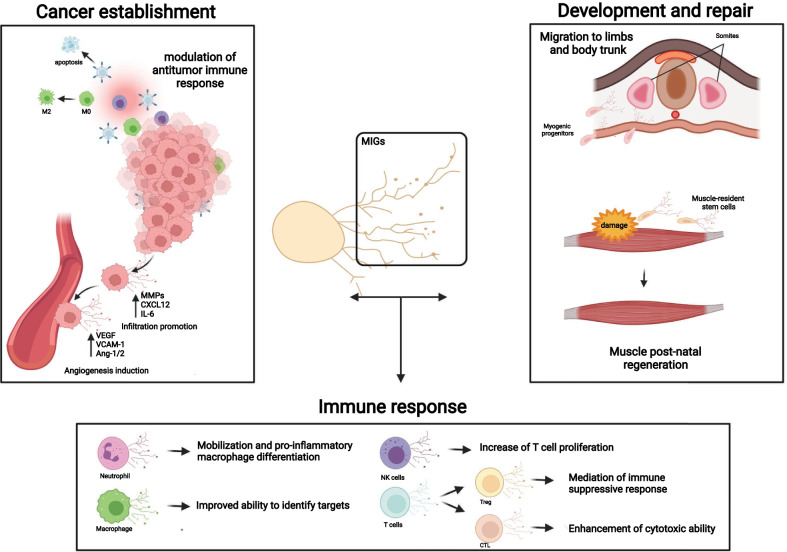Fig. 3.
Migrasomes in different contexts. Schematic illustration of migrasomes putative roles in distinct scenarios. In TME cancer cells might release migrasomes to facilitate their intravasation, tissues infiltration and angiogenesis together with the enhancement of the immunosuppressive effects. During the skeletal muscle development, myogenic precursors-derived migrasomes could orchestrate a finely tuned motility of neighboring cells, thereby promoting a more concerted migration towards limbs and body trunk; while, after injury, the muscle-resident stem cells-derived migrasomes may be involved in a more rapid repair of the damage. According to the immune population type, migrasomes could exploit several crucial roles: from regulation, activation or mobilization of other immune cells (migrasomes released by the antigen presenting cells, for example), improvement of target identification (macrophage-derived migrasomes, full of processed antigens) to enhancement of cytotoxic/suppressive ability in an environmental-dependent manner (T cell-derived migrasomes)

